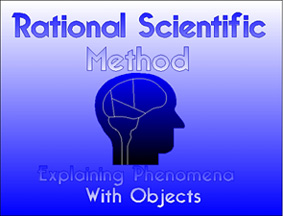What Happened to the Dinosaurs?

What Happened to the Dinosaurs
September 22, 2013 When I was nine years old I was kicked out of Vacation Bible School for "disrupting the class."
The teacher told my mother that I was incessantly asking questions about dinosaurs during the reading of the Adam and Eve story.
After all these years, it has finally been made clear to me what probably happened to the dinosaurs. Today I understand the mechanism behind it, the "law of extinction." It reasonably explains why every species eventually goes extinct. It is either background extinction or mass extinction. No massive meteorite collisions with the corresponding impact winter. It wasn't disease, or predation, or any of the things that had been postulated and hypothesized before. It was simply the overturning of the population pyramid or inversion of the ecological pyramid.
Amazing that no one had ever proposed the simple explanation of the natural economy, until recently. Economics is all about the management of resources, and for nature it boils down to the management of food. Unlike man's artificial economy where three percent of the population provides the food for the rest other earth creatures have to fend for themselves.
Neanderthal reigned supreme and was able to gather and hunt enough food to thrive. Eventually the population grew old and died off by way of background extinction. Background extinction is when the population pyramid overturns mostly as a result of density-dependent birth rates and loss of genetic stock. The loss of biological diversity is the same for all plants and animals. Declining diversity and increased specialization leads to a collapse of carrying capacity. The young were simply unable to provide for the growing number of old Neanderthals who couldn't carry their own weight. The population inversion resulted in the ultimate demise of Neanderthal. They simply died of old age. It's not the worst way to go, really!
T-Rex, on the other hand, went the way of mass extinction. As older species of plants died off. Herbivores depending on those plants starved, and in turn the carnivores that hunted them starved.
During the Cretaceous period, Tyrannosaurus Rex relied mostly on Triceratops who ate mostly cycadeoids and cycads.
Tyrannosaurus Rex, the terrible lizard, was a carnivore. Triceratops which means three horned face was a herbivore. Cycadeoids and cycads are types of seed plants, with strong woody trunks, and large, stiff evergreen leaves.
Mossasaurs, which were large marine reptiles ate mollusks which are a type of shell fish such as clams. Mollusks ate plankton, which are microscopic organisms like algae and protozoans.
During the Triassic Period, Prestosuchus, with his serrated teeth, munched on smaller animals like Hyperodapedon, a beaked reptile, who scarfed mostly on Dicroidium, a fork-leafed seed fern.
As new plants develop, new species of animals develop along with them. With more plant diversity comes greater animal diversity. As older species of plants reach their peak and die off, the herbivores that eat them die off.
The plants condition the environment for the next species of plants and animals that inherit the earth. This happens mostly by way of biochemical pumps that create small changes in the atmosphere over a long period of time, usually millions of years. As the atmosphere changes, new plants edge out the old plants, and the herbivores that depend on them starve, and the carnivores that depend on them starve.
The nitrogen cycle and carbon dioxide cycles regulate the types of plants that proliferate. Cycads and cycadeoids were crowded out by other newer plants which thrived on the new conditions. Angiosperms were crowded out by gymnosperms. After Triceratops ate most of the cycads and temperatures dropped, new gases and new plants arrived on the scene.
Cyanobacteria depend on a symbiotic relationship with cycads. The decline in cycads lead to a decline in cyanobacteria which lead to more decline in cycads. Triceratops populations declined and T-Rex starved.
This same process happened in a number of geologic periods, and explains mass extinctions consistently.






